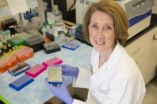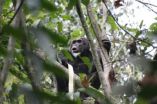(Press-News.org) Korean research team revealed conflicting climate change patterns between the middle latitude areas of the Northern and Southern Hemispheres in relation to glacial and interglacial cycles which have been puzzled for the past 60 years.
Doctor Kyoung-nam Jo from the Quaternary Geology Department of the Korea Institute of Geoscience and Mineral Resources(KIGAM) revealed a clue for solving the riddle of past global climate change in his paper titled 'Mid-latitudinal interhemispheric hydrologic seesaw over the past 550,000 years' which was featured in the journal Nature.
This study collected samples from the stalagmites and flowstones in limestone caves which are called 'hard disks' containing the past climate change data and revealed how much they grew in which eras through isotope analysis and age dating, and traced the past climate changes by applying them to global climate change over 550,000 years.
For this study, Doctor Jo explored over 200 caves in Korea and collected 24 samples from stalagmites and flowstones in 15 limestone caves. As a result of analyzing the growth through U-series age dating, it was found that they grew well during interglacial eras when it was warm and moist, whereas their growth stagnated during glacial eras. By comparing this data with existing external climate change data which were obtained from solar insolation, glaciers, and deep sea sediments, he found that the same climate change phenomena appeared in the same periods.
In particular, he and colleagues revealed the fact that climate changes in the Northern and Southern Hemispheres showed opposite tendencies by analyzing the fact that stalagmites and flowstones in the temperate zones of the Northern and Southern Hemispheres had opposite growth periods. This suggests for the first time that the so-called phenomenon of the interhemispheric hydrological seesaw that the precipitation changes in the tropical regions show opposing tendencies between Northern and Southern Hemispheres had been spread to the temperate region in which the Korean peninsula was located at least for the last 550,000 years.
Due to the interhemispheric hydrological seesaw, when it rains frequently in a region that belongs to the intertropical convergence zone (ITCZ), it accelerates the growth of plants and increases the temperature, whereas other areas exhibit cold dry weather. This theory has been applied only to the tropical region and had not been significance in global climate change. However, if it is expanded to the temperate regions by the study of Doctor Jo, the seesaw phenomenon may be regarded as another key factor besides the insolation change which has been regarded as the most powerful factor in the glacial and interglacial cycles.
The findings of this study are attracting very keen interest from academic circles because they can be used to explain past climate change and predict future climate change. In particular, as the different climate change mechanisms by region were revealed, it is expected that a more accurate global climate change model could be created.
Doctor Jo said, "Geology research such as ancient climate research is usually regarded as something that is distant from our daily lives, but it is the only way to understand the effects of large-scale climate changes that actually happened in the past. In order to more accurately assess serious climate change events and the impacts that human beings will experience, it is essential to continuously discuss with domestic scholars as well as to participate in large-scale international joint research programs such as the IODP(International Ocean Discovery Program).
INFORMATION:
Doctor Kyoung-nam Jo is a specialist on the research of ancient climates using cave products. After graduating from the department of geology of Kangwon National University, he received master and doctorate degrees in the graduate school of the same university. Now he is conducting research in the Korea Institute of Geoscience and Mineral Resources.
Identifying opposite patterns of climate change
2014-06-18
ELSE PRESS RELEASES FROM THIS DATE:
Study shows race a factor in mortality in heart attack patients on anti-clotting drug
2014-06-18
Researchers have identified the first genetic variations linked to race that begin to explain a higher risk of death among some African American and Caucasian patients taking the anti-clotting drug clopidogrel (Plavix) after a heart attack.
These variants increased patients' risk of dying in the year following a first heart attack, but they appeared to do so for different reasons depending on race, according to a study at Washington University School of Medicine in St. Louis.
In particular, the team found that two DNA variants common in African Americans were associated ...
Birds evolve 'signature' patterns to distinguish cuckoo eggs from their own
2014-06-18
For some birds, recognising their own eggs can be a matter of life or death.
In a new study, scientists have shown that many birds affected by the parasitic Common Cuckoo - which lays its lethal offspring in other birds' nests - have evolved distinctive patterns on their eggs in order to distinguish them from those laid by a cuckoo cheat.
The study reveals that these signature patterns provide a powerful defense against cuckoo trickery, helping host birds to reject cuckoo eggs before they hatch and destroy the host's own brood.
To determine how a bird brain might ...
Groundbreaking research finds human sweat can reduce bacteria defenses
2014-06-18
Sweaty hands can reduce the effectiveness of bacteria-fighting brass objects in hospitals and schools after just an hour of coming into contact with them, according to scientists at the University of Leicester.
While copper found in everyday brass items such as door handles and water taps has an antimicrobial effect on bacteria and is widely used to prevent the spread of disease, Dr John Bond OBE from the University of Leicester's Department of Chemistry has discovered that peoples' sweat can, within an hour of contact with the brass, produce sufficient corrosion to ...
No link found between soy food and endometrial cancer risk, say researchers
2014-06-18
Researchers have found no evidence of a protective association between soy food and endometrial cancer risk, says a new study published (18 June) in BJOG: An International Journal of Obstetrics and Gynaecology.
Soy foods are an almost exclusive dietary source of isoflavones, a plant-derived estrogen. Some studies have highlighted their potential cancer protective properties, however, research looking at the link to endometrial cancer has been inconsistent.
The study defined short IPI as time from the immediate preceding birth to subsequent birth of the index pregnancy ...
Shortage of cybersecurity professionals poses risk to national security
2014-06-18
The nationwide shortage of cybersecurity professionals – particularly for positions within the federal government – creates risks for national and homeland security, according to a new study from the RAND Corporation.
Demand for trained cybersecurity professionals who work to protect organizations from cybercrime is high nationwide, but the shortage is particularly severe in the federal government, which does not offer salaries as high as the private sector.
"It's largely a supply-and-demand problem," said Martin Libicki, lead author of the study and senior management ...
Vaccine 'reprograms' pancreatic cancers to respond to immunotherapy
2014-06-18
Researchers at the Johns Hopkins Kimmel Cancer Center have developed and tested a vaccine that triggered the growth of immune cell nodules within pancreatic tumors, essentially reprogramming these intractable cancers and potentially making them vulnerable to immune-based therapies.
In their study described in the June 18 issue of Cancer Immunology Research, the Johns Hopkins team tested the vaccine in 39 people with pancreatic ductal adenocarcinomas (PDAC), the most common form of pancreatic cancer. The disease becomes resistant to standard chemotherapies and is particularly ...
Supplements of calcium and vitamin D may have too much for some older women
2014-06-18
CLEVELAND, Ohio (June 18, 2014)—Calcium and vitamin D are commonly recommended for older women, but the usual supplements may send calcium excretion and blood levels too high for some women, shows a new study published online today in Menopause, the journal of The North American Menopause Society.
This randomized, placebo-controlled trial included 163 older (ages 57 to 90) white women whose vitamin D levels were too low. The women took calcium citrate tablets to meet their recommended intake of 1,200 mg/day, and they took various doses of vitamin D, ranging from 400 to ...
Moral tales with positive outcomes motivate kids to be honest
2014-06-18
A moral story that praises a character's honesty is more effective at getting young children to tell the truth than a story that emphasizes the negative repercussions of lying, according to research published in Psychological Science, a journal of the Association for Psychological Science.
The findings suggest that stories such as "The Boy Who Cried Wolf" and "Pinocchio" may not be effective cautionary tales when it comes to inspiring honest behavior in children.
Stories have long been employed to instill moral and cultural values in young children, but there is little ...
Thieving chimps changing the way African farmers feed their families
2014-06-18
Dublin, June 18th 2014 – Light-fingered chimpanzees are changing the way subsistence farmers make a living in Africa by causing them to grow different crops and spend more time guarding their goods. This is according to work performed by researchers from Trinity College Dublin's School of Geography, who say that communities near the edge of tropical forests are experiencing a lack of 'dietary diversity' and an increased exposure to disease-carrying insects as a result.
Through crop raiding, a form of human-wildlife conflict, hundreds of thousands of marginalised farmers ...
New study suggests benefit of screening on breast cancer deaths
2014-06-18
An accompanying editorial says this study largely confirms what is already known - that the benefits of breast screening "are modest at best" – and calls for women to be given balanced information including the screening harms of overdiagnosis, psychological stress, and high healthcare costs.
Randomised trials from the 1970s and 80s suggested that mammography screening prevents deaths from breast cancer. But the methods used by some of these studies have been criticised, and this has raised doubts about the validity of the findings. Advances in technology and treatment ...

